As an Amazon Associate, I earn from qualifying purchases with no additional costs for you.
One of my favorite wines to drink is a nice Bordeaux but knowing how long to age it was a bit hazy to me. Some vintages are made with premium grapes and can age much longer than other lesser-quality grapes.
Bordeaux wine is one of the best aging wines displaying a slow, gentle rise in maturity and complexity, followed by a period of peak drinkability. High-quality Bordeaux should be aged for at least 10 years but normally reach their peak in the 15-20 year range. More mass-produced Bordeaux wines should be drunk much sooner, after about 5 years of aging.
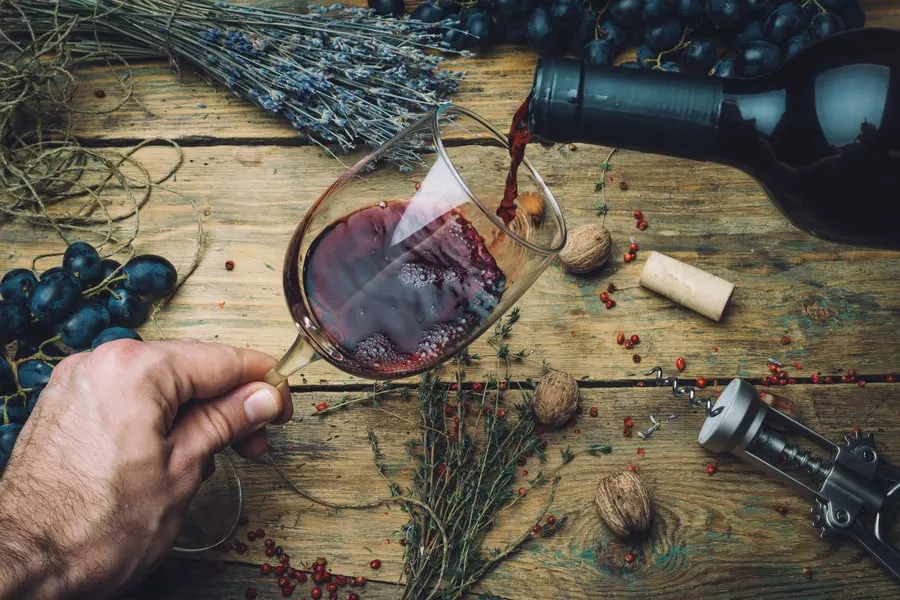
TIP: If you want to check out the best refrigerator for wine storage, I recommend trying out the Avation (18 bottles) compressor refrigerator with Wi-fi smart app control cooling system. You can find this refrigerator by clicking here (Amazon link).
Bordeaux Wine & Age-ability
Where is Bordeaux?
The region of Bordeaux is located in southwestern France, where it receives moderate rainfall and temperatures, and influence from the Atlantic Ocean.
The Dordogne and Gironde Rivers run through the region, creating distinct sub-areas known as the Left and Right Banks (as well as an area in the middle known as Entre-Deux Mers.
These climate and aspect factors all lead to the ideal balance of tannin, sugar, and acidity in the final wines that make them so well suited for aging. Almost all the grapes grown in this area are red. The region of Bordeaux produces about a quarter of all the wine in the world.
Although the region produces white wine, rosé, and small amounts of bubbly crémant, 85% of the total production volume is red wine. With a few notable exceptions, the reds of Bordeaux are the most famous, and some of the most prized and highly valued wines in the world.
Recommendation box: Everything you need to enjoy your wine as much as possible. All recommended products are personally tested and regularly used by experts from this website (Amazon links):
> Ivation Wine Cooler – Energy-efficient wine cooler for 18 bottles with Wi-fi smart app control cooling system.
> Wine Rack – Beautiful, elegant wood rack for up to 7 bottles and the choice of vertical or horizontal storage.
> Durand Wine Opener – Classic vintage wine opener (we like all these classic staff).
> YouYah Iceberg Wine Decanter – The most beautiful and handy wine decanter we personally use.
> Bormioli Rocco Wine Glasses – A set of eight elegant and traditional wine glasses made in Italy.
> Vintorio Wine Aerator – Simple but really useful wine aerator for a reasonable price.
> The Original Vacu Vin Wine Saver – The best wine saver on the market in a package with two vacuum stoppers and two wine servers.
And if you want to become a true connoisseur of wine, we recommend reading the book Wine Folly: The Essential Guide to Wine (Amazon link), where you will find all the information you need about winemaking, wine varieties, flavors, and much more.
All red Bordeaux wines are comprised of a blend of Cabernet Sauvignon, Merlot, Cabernet Franc, Petite Verdot, and Malbec (to a much lesser extent).
The Left Bank, with its free-draining gravelly soils, is best known for growing Cabernet Sauvignon with pronounced dark fruit aromas and flavors, especially cassis.
Meanwhile, the clay soils of the Right Bank are ideal for growing premium Merlot that features more red fruit characteristics, such as plum.
Some Right Bank wines also include a heavy dose of Cabernet Franc (the father grape of Cabernet Sauvignon), increasing their structure and adding to their longevity.
This makes these wines age very well. Virtually all red Bordeaux is a blend of two or more of these five grape varieties, allowing the winemaker to find exactly the right balance of acidity, tannin, and flavor nuances.
TIP: To learn how to properly store red wine including Bordeaux for the best aging, please read this helpful article. Does wine age in barrels and bottles? Find out the answer from a wine expert here.
How Bordeaux Ages
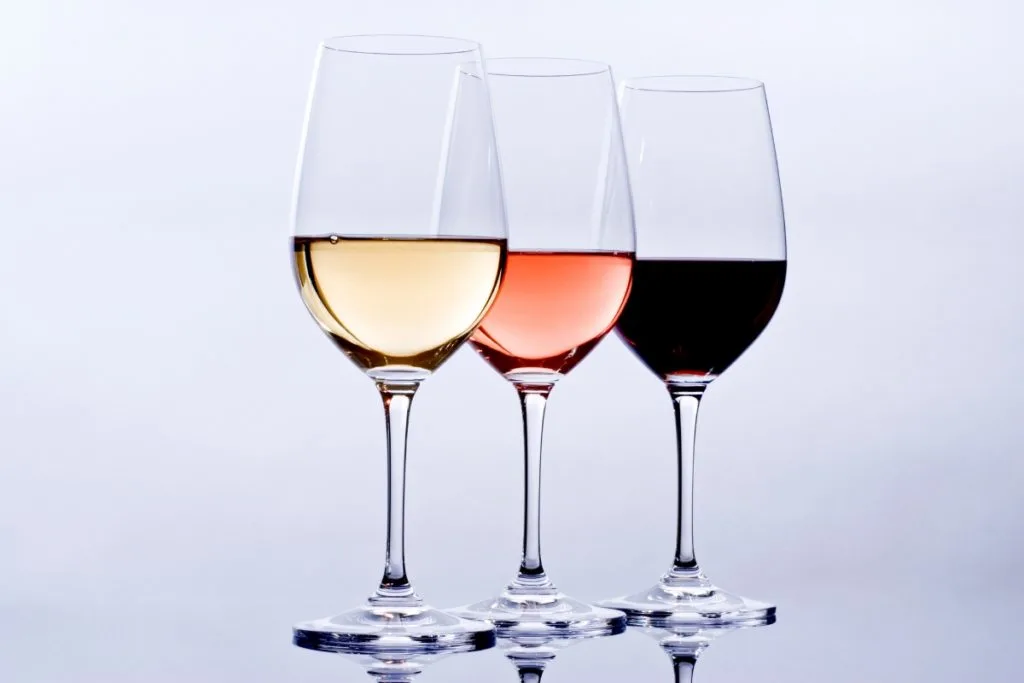
The aromas and flavors of wine are typically divided into three categories: primary, secondary, and tertiary. Primary flavors are those associated with the fruit itself, secondary notes are the ones added by the winemaker (malolactic fermentation and oak flavors, for example), and tertiary notes are the ones that come with age – these can include dried fruits, leather, game, mushroom, and so forth.
So, as a wine age – and this holds true for Bordeaux – those initial aromas and flavors of bright plum will change into a dried prune, floral notes become dried potpourri, fresh herbs become dried herbs, and so on.
The term ‘bouquet’ is used to describe the aromas of more evolved wines. It is this unique increase in complexity that makes bottle-aged wines more interesting and desirable.
Specifically for Bordeaux, many young wines have a herbal quality (menthol, eucalyptus, and green bell pepper are all common descriptors).
TIP: Do grapes contain alcohol and how much? Read this guide to find out! Can wine ferment in the bottle and why does this happen? This article explains.
This is a genetic marker found among the grape varieties that share a common parentage, as is true for those in Bordeaux. This characteristic fades with age and can turn to more dried herbs instead of fresh.
At a young age, oxygen can be the enemy of fine wine. Open a bottle and a day or two later, it’s gone ‘off.’ However, a very slow trickle of oxygen over many years (through the porous cork closure) can help a wine mature and evolve without becoming oxidized. The naturally high acidity in wine prevents bacteria from being able to survive, protecting the liquid from long-term aging.
The acidity, along with higher alcohol levels, acts as a preservative of sorts, allowing the wine to remain unblemished while it slowly matures in the cellar. The color will slowly change from deep ruby to more garnet.
This is especially noticeable around the rim of the wine once it is in the glass. This change in color is due to the slow leak of oxygen into the bottle during aging and is a good indicator of a more mature wine. If the color is too faded, it can be a sign that the wine is past its peak.
The aging process does not just affect what humans perceive as color, smell, and flavor – there is an actual chemical change that the wine undergoes over years in the bottle. Over time, the naturally occurring proteins and the tannin compounds undergo a chemical reaction (this reaction also results in the sediment in the bottom of older bottles of wine).
This interaction is what creates the silky mouthfeel of an aged Bordeaux – the tannin turns to velvet, creating a smooth, drinkable wine where once the tannin may have been harsh and overwhelming. Bordeaux red wines, especially the Cabernet Sauvignon-based blends from the Left Bank, can be particularly tannic in their youth.
TIP: Is there a difference between French and Californian wines? Read the surprising answer to this question here! Do you know which wine year is best and why? Find out in this guide.
With time, however, those tannins will soften, increasing the smoothness and overall drinkability of the wine. Additionally, over time all of the structural elements of the wine (acid, tannin, alcohol, and oak) will integrate with each other, creating balance.
This means no one element overpowers the others, but instead they exist in harmony, complementing each other rather than competing.
How Long Should Bordeaux Age?
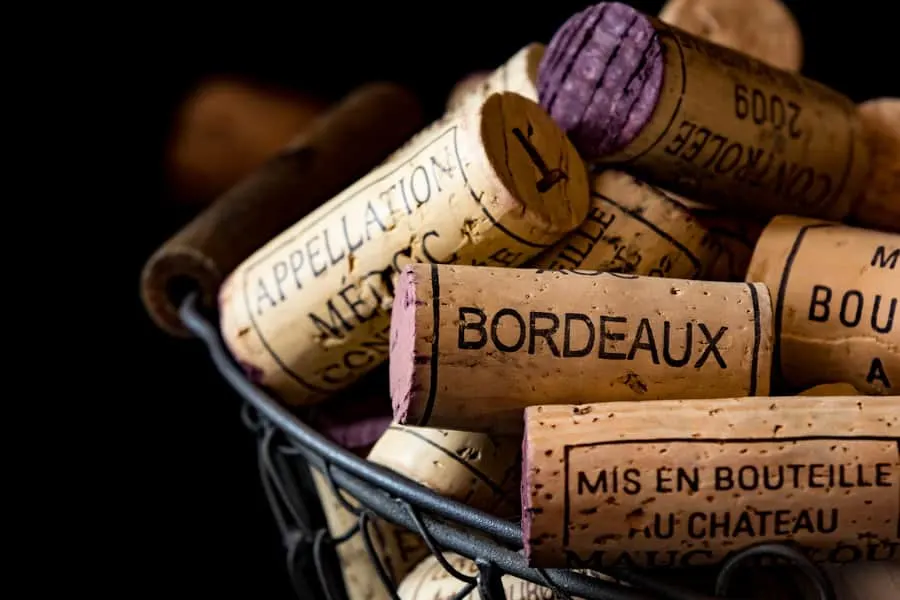
When contemplating aging Bordeaux wines, think of a bell curve. There is a slow, gentle rise in maturity and complexity, followed by a period of peak drinkability, before the wine heads down the curve and starts to wane.
High-quality Bordeaux should age for at least ten years. These wines usually reach their peak in 15-20 years and remain at peak for about 10 years.
After that, they begin a slow decline into ‘over the hill’ maturity, symptoms of which include loss of color, concentration, and flavor.
For most wines, 30 years and beyond is getting risky. The longer a wine is cellared, the more susceptible it becomes to certain flaws, such as cork taint and oxidation.
TIP: Are you interested in buying a wine stopper? We’ve personally tried and recommend buying one of these wine stoppers (Amazon links):
- The Original Vacu Vin Wine Saver: Our top choice. Very easy-to-use wine stopper/saver. You can enjoy a glass of fresh wine whenever you want without worrying about wasting any.
- EZBASICS Wine Saver: Great alternative to Original Vacu Vin Saver. This wine stopper keeps the flavor of wine for up to one week.
- Champagne Stopper by MiTBA: Wine stoppers for sparkling wines are different. This wine stopper seals your bottle and increases the pressure so your beverage’s bubbles won’t go to waste.
Vintage variation can be a big factor in determining the age-worthiness of Bordeaux. Each vintage produces different wines, even from grapes from the same vineyards or wines from the same producers.
Annual factors of rain, frost, sunshine hours, and so forth can affect the final levels of acidity and alcohol in the wine and therefore affect its age-ability.
Vintages charts are a great resource for checking on specific years and their readiness for drinking. The better the vintage and the more balanced the wine is from the get-go, the more age-worthy it is.
For some, aging wine is an investment strategy. Typically, the resale value increases on high-quality Bordeaux wines from good vintages – meaning that the bottle may cost a couple of hundred dollars up front, but in twenty years that investment could easily double triple, or more.
Again, paying close attention to vintage charts will help guide an investor on the best time to sell an old bottle. Along the same vein, buying young Bordeaux and aging it one’s self is the more economical way to gain access to older vintages of wine (versus buying the wine already aged at auction or through a specialty seller).
Should All Bordeaux be Aged or Drank Immediately
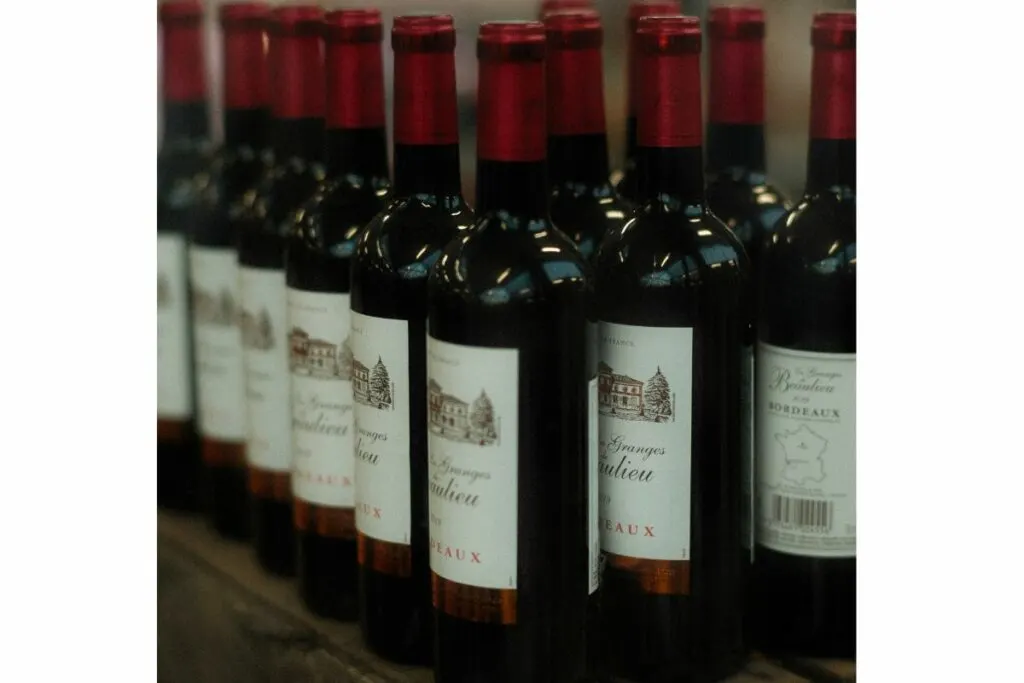
The region of Bordeaux produces more fine wines (and collectible wines) than anywhere else in the world. Of all the wine produced, however, only about 3% is considered premium or super-premium – and these are often the wines most suited for long-term aging.
Typically, vintages that produce highly structured wines are ideal for long aging. Light wines or those from ‘off’ vintages tend to mature more quickly, stay at their peak for less time, and then go downhill more rapidly.
In this case, price is an indication of the age-worthiness of Bordeaux. The vast majority of wines labeled ‘Bordeaux AOC,’ often priced under $30 a bottle, are made for mass production and quick consumption, usually within five years (keeping the buyer coming back for more).
For top-tier wine, Bordeaux has a classification system called ‘growths’.The First Growths are the top chateaux (producers) in the region and go for top dollar. The First Growths are: Chateau Lafite Rothschild, Chateau Latour, Chateau Margaux, Chateau Haut Brion, and Chateau Mouton Rothschild.
These are all located on the Left Bank and feature a good dose of Cabernet Sauvignon in the blends. These are going to be the most age-worthy of all Bordeaux wines and often go for $1000 or more per bottle.
Second Growths can often offer a lower price while maintaining high quality and age-worthiness. Right Bank Merlot-based wines are not part of the ‘growth’ classification system described above, but some chateaux do produce very high-quality, ageable wines worth seeking out for cellaring. Even top-end wines are still susceptible to vintage variation, so do some research before making a significant purchase.
Regardless of the classification, if possible, buy several bottles of a specific wine and open one every few years. Note how it changes and evolves and identify the stage that is most enjoyable for you – it may not be the same for everyone.
Regardless of the age-worthiness of wine, some drinkers prefer the fruit-forward, powerful nature of red Bordeaux wines in their youth. And don’t forget, the point of aging wine is to discover new and interesting flavors – just because wine can age doesn’t always mean it has to.
TIP: For a complete guide to aging cheap wine and if you should even bother, please check out this helpful article. Is there really a difference between cheap and expensive wines? This article explains.
How to Store Bordeaux for Aging
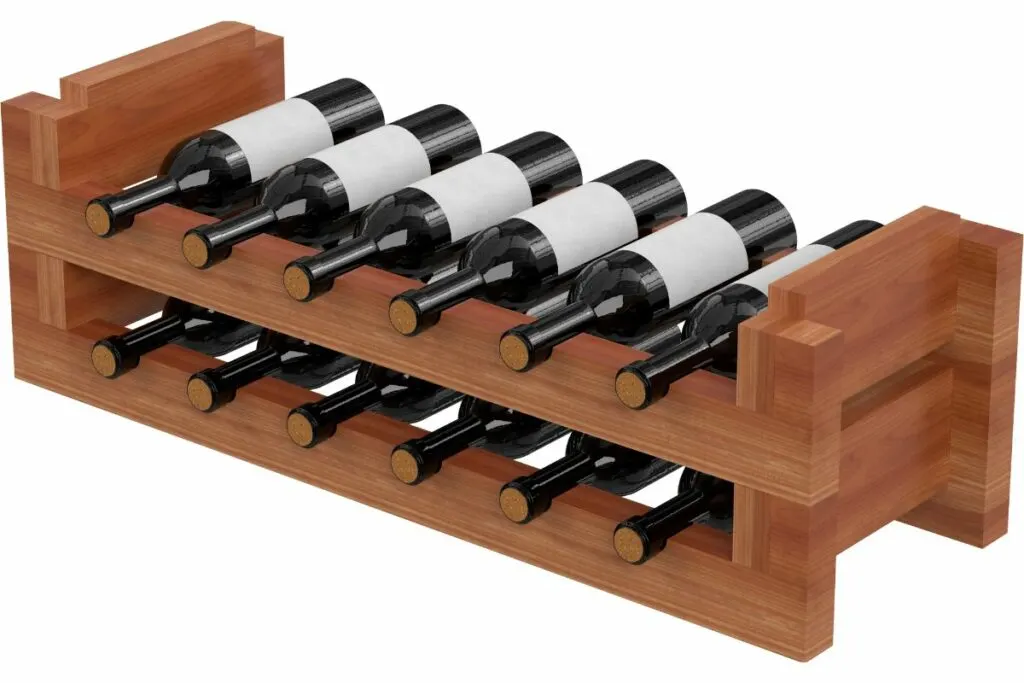
All wines intended for long-term cellaring should be kept in a cool, dark, slightly damp place away from change in light and vibration (think of the temperature and conditions of underground wine caves in Bordeaux and throughout Europe and this makes a lot of sense). 55 degrees F is ideal.
Bottles should be kept on their sides so that the wine inside maintains contact with the cork – this prevents the cork from drying out and allowing too much oxygen into the bottle. There are several options available to today’s collectors, depending on the resources, space, and value of their collection.
The entry-level option is to purchase a wine fridge for one’s home. These can hold anywhere from 12 to 200 bottles (and of course, the larger they are, the higher the purchase price). Simple models have the ability to set a single zone temperature but do not offer humidity control.
Again, more expensive options often have multiple temperature zones and humidity control options. Some also have a coating on the glass door to help prevent UV light from interacting with the bottle inside.
Wine refrigerators can be more affordable than you think. You should check out this list of 55 wine coolers I priced out for a general idea of what you can expect to pay for a great wine fridge.
TIP: Most wines go bad once you pop the cork within a day or so. But a Coravin Wine Preservation system (available for a great price on Amazon) can extend the life of your opened wine for weeks or even months. It is awesome. You should check it out to see if it fits your lifestyle.
A second option is to build a home wine cellar, preferably in one’s basement (typically the coolest and most humid area of the home). This is obviously contingent on having available space, resources, and willingness to work on ongoing maintenance of the space.
Having a home wine cellar is a wonderful luxury but can also be a huge upfront commitment. A final option that connoisseurs may not be aware of is to outsource wine storage. Professional wine storage takes the work out of long-term cellaring and leaves the technicalities to the experts.
Think of professional wine storage as an investment for your investment, ensuring that the collection retains its value and is able to reach peach drinkability.
How Long to Let Bordeaux Breathe After Aging
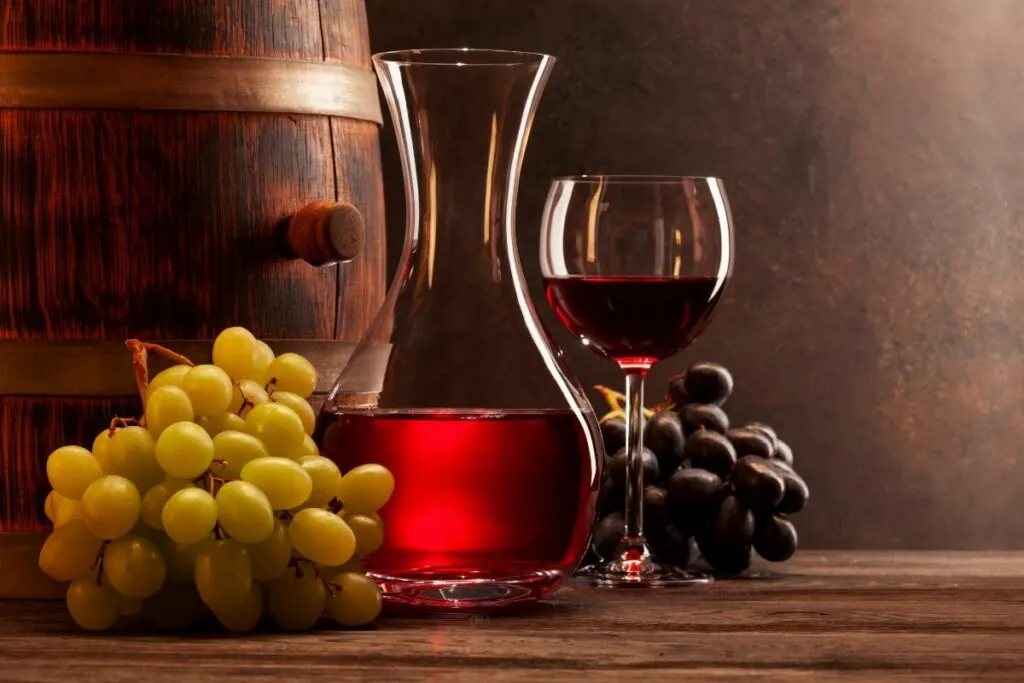
After years – or even decades – trapped in the bottle, freshly open mature red Bordeaux needs a chance to open up prior to drinking.
Exposing the wine to oxygen – also known as ‘letting it breathe’ – allows the aromatics and flavor compounds to express themselves more fully once in the glass. A general rule is to let Bordeaux wines breathe for about 30 minutes. They can always be taste-tested along the way to ensure ideal development.
TIP: Should red wine be served at room temperature? Find out the truth in this article. Fact or myth – can you freeze wine or will you ruin it? This article answers this question and more!
A side effect of the aging process is the accumulation of sediment in the bottle of the bottle. While removing the wine from its shelf in the cellar, take care not to stir it up too much.
The broad shoulders of a traditional Bordeaux bottle are meant to help collect sediment while pouring, but using a decanter is ideal in this case – it allows aeration and the avoidance of sediment in the glass.
The narrow neck of a bottle is too small to really allow much breathing, so simply opening the bottle and setting it on the counter won’t quite cut it.
A decanter is best, but even pouring the wine into a proper glass and occasionally swirling over 30 minutes or so will make a world of difference.
TIP: If you are interested in buying a wine decanter, I recommend purchasing these two top-quality decanters:
- USBOQO Wine Decanter (check it out on Amazon & read customer reviews)
- Iceberg Wine Decanter (check it out on Amazon & read customer reviews)
And speaking of glassware – Bordeaux wines are so popular that they even have a style of wine glass named after them, and as one might expect, this is the best option for getting the most out of the wine. These glasses are tall with a broad bowl and work well for most full-bodied red wines.
TIP: Check out this page for a complete list of wine products and accessories I love. You’ll find my recommendations for wine refrigerators, decanters, and aerators and the best place to buy wine online. Click here to see the complete listing.
Harding, J. (2015). The Oxford Companion to Wine (4th ed.). Oxford University Press, USA.
